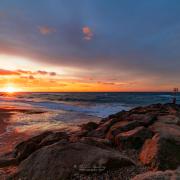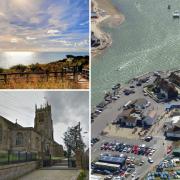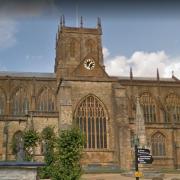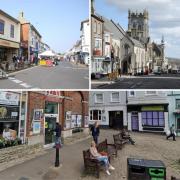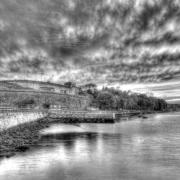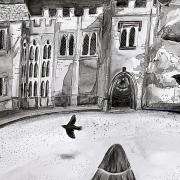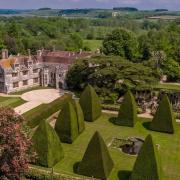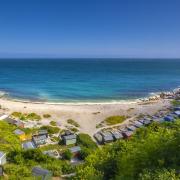Boscombe's new artificial surf reef is making waves and with its regenerated seafront this destination is set to become a surfers' paradise, as Edward Griffiths discovers.
Who could have envisaged that the rather tired and shabby Boscombe Spa seafront would take such a giant leap into the 21st century with a stunning and innovative regeneration based entirely around surfing?
Over the past few years, bravely bucking the trend, far-sighted developers have transformed the skyline above Boscombe's sandstone cliffs with some magnificent modern blocks of first-class apartments, while the 1903 terrace of gabled cottages in Overcliff Road has been restored to its original elegance, but Boscombe's decaying seafront stubbornly remained old and tired.
Then Bournemouth Borough Council took the bold decision to go for a complete redesign and redevelopment of the entire area around the pier and the under-used car park east of the pier. By selling the car park to Barratt Homes for the luxury Honeycombe Beach residential complex, the Council raised the �9.66 million it needed for the Boscombe Spa Regeneration Project.
During construction of the Honeycombe Beach complex, the emerging effect of elegance, subtle colours and charm was muted by the 1958 Overstrand buildings and the peeling three-level concrete beach chalet assemblage in front of it. So, even before the surf reef was finished, full attention was concentrated onto these buildings. They have now been refurbished beyond recognition to include 59 luxury beachhuts known as beach pods, each with an individual retro design by world-famous designer Wayne Hemingway. There are Surf Schools and Surf Shops, changing rooms with hot showers, a lifeguard station, and the already-popular Urban Reef Restaurant.
Boscombe Pier.
The focal point of the new landscaped piazza and approach-road layout is the pier's unique 'flying-wing' pierhead, built in 1962 which has now been granted Grade II Listed status by English Heritage. A �2.4 million refurbishment of the 1889 pier started in January 2007 during which the old Mermaid Theatre at the end of the pier was demolished and all new timber decking was installed. When the 185m long pier was re-opened in May 2008, Wayne Hemingway described it as 'one of the coolest piers in the country'.
The Surf Reef
Boscombe's exciting new Surf Reef is the first of its kind in the northern hemisphere and one of only four artificial reefs worldwide. The others are in Australia, India and New Zealand. But, amazing as the world-class surf may be, the whole project was just one part of the stunning regeneration programme.
"Bournemouth has the third-largest population of surfers in the country," says Bournemouth Surfing Centre's Paul Clark. "The reef promises the nearest thing to an Atlantic roller this side of Cornwall."
The surf reef was designed by Dr Kerry Black of ASR Limited, a former Professor of Oceanography at Waikato University in New Zealand and a top research scientist at the National Institute of Water and Atmosphere. This is a man who knows how to create the right conditions for surfers. Dr Black's worldwide research resulted in Boscombe's surf reef being designed to artificially replicate world-class surfing waves. The licence to build the reef was given by the Marine and Fisheries Agency which carried out extensive research to ensure the reef wouldn't have an impact on coastal erosion.
Under the direction of ASR Ltd's Rex Pollock and Andrew Moores, the reef was built from two layers of enormous geo-textile bags from Australia, each individually filled underwater with sand and water 'slurry' pumped from a massive filtered stockpile on the beach. The bottom layer of bags, completed in 2008, is laid on a geo-mat and webbing base to prevent the structure from sinking into the sea-bed. After settlement, the top of the reef will be 0.5m above low 'springs' sea-level, so boats and other craft are excluded from the extensive surfing area.
Over coffee at the Urban Reef, ASR Director Shaw Mead explained the mechanics. "The reef doesn't actually create waves. It's angled to catch the mean wave direction, and it acts as a ramp which changes the way the waves break. It improves the quality of the surf and produces a long right-hand ride of about 75 metres for surfers, and a shorter left-hand ride of about 35 metres for body-boarders. Boscombe's Reef is designed to produce a Grade 5 wave on a day with good swell, which is in the 'Challenging' range on the scale where Hawaii Pipeline is Grade 8. Shaw explained, "We've been modifying the sea-bed to make the waves break better for surfing when there's a swell. The reef doesn't double the wave height although some height increase happens at the take-off owing to focusing of the peak'. Only intermediate and competent surfers are advised to ride the challenging waves.
A wildlife haven
As the new reef settles into the sea-bed environment, marine creatures are beginning to colonise its surfaces and take shelter inside it. The whole reef will become a haven for wildlife that would never exist on the flat seabed. Already, it is home to spider crabs and breeding fish, and dolphins have been seen frolicking in the reef's surf.
"Dolphins are intelligent creatures and inquisitive by nature," says Ben Wallbridge, Coast and Marine Ranger at Durlston Country Park. "They may well be playing in the new reef's surf, as it's something they haven't seen before."
An Economic Impact Assessment suggested that the reef will produce a yearly income of about �3 million through equipment retailing, surf-training, accommodation, food and drink, creating about 60 full-time and 30 part-time jobs. On top of that, an 'image value' of about �10 million per year is expected to result from national media interest.
You wouldn't recognise Boscombe now, the whole place is buzzing with excitement. Walk out onto the reconstructed Victorian pier, look back and enjoy the delightful backdrop of contemporary residential design and elegant Edwardian seaside cottages. Even if you're not a surfer, you can still join the 'Surf Set' by enjoying an alfresco coffee or light lunch at the enticing restaurant on the Overstrand and watch the dudes catching their freshly made waves.
Learn to Ride the Waves
Sorted Surf Shop of Sea Road, Boscombe has two new fully stocked surf stores on the Overstrand, and a Surf School offering lessons in Surfing and Stand-Up Paddle Surfing to groups, individuals and juniors. You can hire surfboards, wetsuits, kayaks and paddle boards. The changing rooms, safe storage facilities, shop and school are open all year, seven days a week. Visit www.sortedsurfshop.co.uk or call 01202 399099.
Surf Steps at Toft Steps is Bournemouth's original Surf School. Founded in 2004, Surf Steps recently became a British Surfing Association Centre of Excellence. There are surfing courses to suit all levels, from complete beginners to expert, from full-day beach festivals to private tuition. Qualified staff include instructors in surf activities for disabled people. Check out www.bournemouthsurfschool.co.uk or call 0800 043 7873.
Surf Culture
The Urban Reef is a funky bar, caf�, deli and restaurant at the heart of the Overstrand, with panoramic views over the Surf Reef from three levels. With its beachside al fresco dining area and beautiful '50s-inspired interior with log fire and triple-height glass frontage, it's an all-year-round destination. Food, coffee and freshly squeezed juices are served seven days a week from 8am to 10pm. More details from http://www.urbanreef.com or call 01202 449360.
Reefside Catering kiosk and beach goods shop at Boscombe Pier entrance has everything you could need for a traditional seaside holiday. The kiosk serves coffee, snacks and ice cream, which can be enjoyed at one of the many tables outside the pierhead.
Many thanks to Jo O'Connell, Resort PR Development Manager for her assistance and surf reef images.SURF REEF FACT FILE
* The Reef covers the area of a football pitch and used 26,000 tonnes of sand.
* It is constructed in two layers with 56 sandbags between 50 and 70 metres long.
* The biggest sandbags are 2.5m high and 5m wide and weigh 1,800 tonnes.
* It took up to three days to fill each of the biggest bags.



